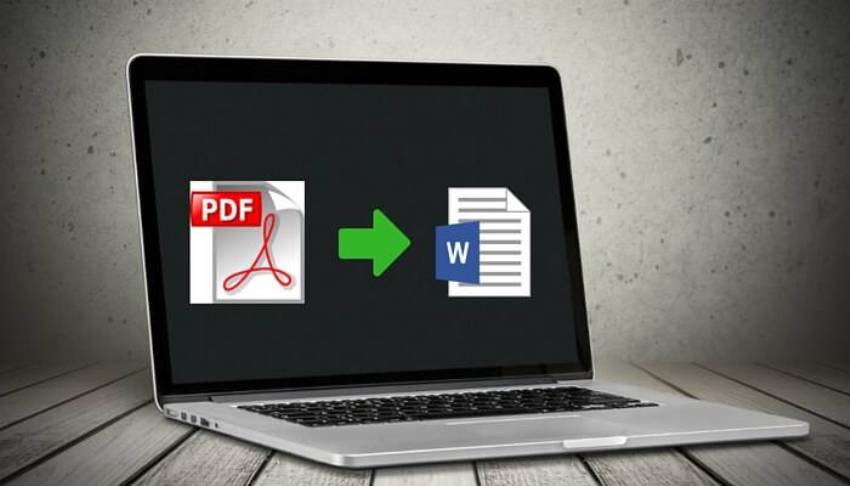How To Change Internet Providers In Australia 2025
Switching internet providers in Australia in 2025 feels like standing at a crossroads with a map that’s half-drawn. You’re itching to change your ISP for something better—maybe a faster wifi connection, a cheaper plan, or just a company that doesn’t make you grit your teeth during customer support calls. Whatever’s driving you to swap services, the process can seem daunting, like trying to untangle a mess of cables behind your TV.
But don’t worry—this guide lays out the steps, tips, and advice to help you transfer your service smoothly, whether you’re in bustling Sydney, laid-back Perth, vibrant Melbourne, sunny Brisbane, charming Adelaide, or tech-savvy Canberra. Let’s dive into how to find, compare, and choose the best provider near me (or you!) with a human touch, a sprinkle of humor, and a whole lot of clarity.
How To Swap Internet Providers 2025
Why Switch Your Internet Provider?
Ever feel like your current ISP is holding your connectivity hostage? Maybe your speeds are crawling like a snail on a coffee break, or your subscription costs are climbing faster than rent in metro areas. Switching providers isn’t just about chasing deals—it’s about finding reliable access that fits your life. In 2025, Australian telecom companies are locked in fierce market competition, rolling out innovations like 5G, fibre, and hybrid solutions.
Also Read: Five Tips To Boost Your Trading Profit In Australia
Whether you’re a gamer craving low latency, a content creator needing unlimited data, or a remote worker juggling video calls, there’s a plan out there that’s a better match. Plus, with promotions, discount codes, and loyalty programs popping up, why stick with a service that’s just “meh”?
Here’s the kicker: Australia’s infrastructure, especially the NBN (National Broadband Network), has leveled the playing field. From rural towns to urban hubs like the Gold Coast, you’ve got options—fixed line, wireless, mobile, even satellite for those coastal holiday rentals. But how many ISPs are actually worth your time? And what happens when you cancel your old contract? Let’s break it down.
Step 1: Assess Your Needs
Before you start browsing plans, ask yourself: what do you really need? It’s like choosing a meal—you wouldn’t order a five-course feast if you’re just peckish. Are you a heavy user streaming high-definition content for your smart home? Or a light, casual browser checking emails in a shared co-living space? Maybe you’re a business owner in a small enterprise, or a freelancer needing reliable uptime for online learning and client calls. Families with multiple devices, students, seniors, or low-income households all have different priorities.
- Gaming and streaming: Look for high-speed tiers (like NBN 100 or 250) with low latency.
- Remote work: Prioritize reliability and upload speeds for video conferencing.
- Budget: Seek cheap packages or subsidies for schools or education needs.
- Temporary residents, expats, or digital nomads: Consider short-term subscriptions with flexibility, like pay as you go or prepaid plans.
Pro tip: Run a speed test on your current connection. If it’s slower than a kangaroo stuck in mud, you’ll know it’s time to get something fast. Write down your must-haves—cost, data, coverage, perks—to narrow down the list of providers.
Also Read: Looking For An Arcade In Australia? Check These Places Out
Step 2: Check Availability at Your Address
Not every provider does it all. Availability depends on where you live—apartments, houses, renters, or homeowners face different types of connections. The NBN dominates, with fibre to the premises (FTTP), node (FTTN), or hybrid coaxial (HFC) setups. But alternatives like OptiComm (big on the Gold Coast) or Telstra’s network for 5G and 4G are gaining traction, especially in regional spots.
Head to a provider’s website or a comparison tool like Finder or WhistleOut. Pop in your address—whether it’s a coastal villa or a Canberra flat—and see which services are available. Some areas might only have satellite (hello, Sky Muster for rural folks) or fixed wireless. Curious if you can have two ISPs in one house? Spoiler: you can, but it’s rare unless you’re running a business alongside home use. Who needs that much bandwidth, right?
Step 3: Compare Plans and Providers
Now’s the fun part—diving into the sea of plans. It’s like scrolling through a menu with too many choices, but a comparison guide keeps you grounded. Australian ISPs in 2025 range from top dogs like Telstra, Optus, and Aussie Broadband to scrappy underdogs like SpinTel or Tangerine. Here’s how to pick the cheapest, fastest, or most reliable option:
- Speed: NBN tiers go from 25 Mbps (fine for light use) to 1000 Mbps (hello, gaming gods). 5G home internet is a game-changer for urban streamers, while 4G suits travelers.
- Cost: Budget plans start at $50/month, but premium subscriptions with bundles (think VoIP or phone) can hit $100+. Watch for discounts—many ISPs offer six-month promotions.
- Data: Most plans are unlimited, but check for fair-use policies if you’re a heavy user.
- Contracts: No lock-in terms give you flexibility, but long contracts might score you a cheap modem.
- Perks: Free modems, Wi-Fi 6, security features, or inclusions like streaming subscriptions sweeten the deal.
- Ratings: Dig into customer reviews on sites like ProductReview.com.au. Satisfaction matters—nobody wants an outage during a Netflix binge.
Wondering about the 5 largest telecom companies? Telstra, Optus, TPG, iiNet, and Aussie Broadband lead the pack. But don’t sleep on smaller ISPs—they often have better pricing and support. What’s the worst? Avoid providers with consistent feedback about outages or poor performance. A quick search for “list of 10 most popular” ISPs will show you the crowd favorites.
Also Read: 6 Iconic Australian Beaches To Visit
Step 4: Evaluate Setup and Installation
Once you’ve got a new provider in your sights, check the setup vibe. Will a technician need to visit your house, or is it plug-and-play like 5G home internet? NBN switches usually take a day or two, with minimal downtime—think an hour, tops. Installation costs vary: some ISPs waive fees, others charge for modems or upgrades. If you’re in a new area, like a startup hub in Brisbane, ask how long does it take to keep your history (like porting your phone number).
Got an OptiComm connection? It’s a fibre alternative in places like the Gold Coast, often faster than NBN. Canberra folks, you’re likely on NBN FTTP—lucky you! If you’re sticking with the same network (say, Telstra), the transfer is seamless. Switching to a different one? Double-check cancellation terms with your old ISP to avoid surprise bills.
Step 5: Cancel Your Old Service
Here’s where things get sticky—like pulling off a Band-Aid. Your new ISP usually handles the switch, but you’ll need to cancel your old plan yourself. Does it take 2 minutes? Sometimes, if you’re lucky. Call your current provider, confirm the disconnection date, and check for cancellation fees (especially if you’re mid-contract). Renters or temporary residents in short-term rentals—watch out for early exit penalties.
Pro tip: Don’t disconnect too soon! Line up your new service to avoid being offline during a remote work meeting. Feedback from users says transparency about terms saves headaches.
Step 6: Set Up and Test
Your new modem arrives—hallelujah! Installation is usually a breeze: plug it in, follow the app, and boom—Wi-Fi. Test your speed and reliability right away. Is it delivering the high-speed connectivity you were promised? If not, most ISPs offer a satisfaction guarantee or support to troubleshoot. Startups, freelancers, or professionals—run a few video calls to ensure uptime. Families with smart homes, check if multiple devices play nice.
Tips for Specific Needs
- Businesses and enterprise: Look for dedicated support and static IPs.
- Gaming: Superloop or Aussie Broadband shine for low latency.
- Streaming: Optus or Telstra often bundle subscriptions.
- Rural areas: Starlink or Swoop for satellite or fixed wireless.
- Students/seniors: Seek discounts or subsidies.
- Expats/nomads: Prepaid mobile broadband for flexibility.
What Are the Trends in 2025?
The market is buzzing. NBN rollout is nearly complete, but 5G and fibre upgrades are stealing the show. ISPs are battling with discounts, no contracts, and perks like VoIP. Regulations ensure transparency, so providers must spill the tea on speeds and outages. Smart homes, online learning, and content creation are pushing data demands sky-high. Co-living spaces and holiday rentals want flexible plans, while startups crave tools for connectivity.
Rankings and Comparisons
Based on reviews, here’s a quick peek at top ISPs:
- Aussie Broadband: King of customer service, great for metro gaming.
- SpinTel: Cheapest for NBN 250, no frills.
- Telstra: Pricey but reliable, with 5G bundles.
- Optus: Families love the streaming inclusions.
- Tangerine: Budget champ for light users.
Avoid the 10 worst? Steer clear of ISPs with shaky uptime or dodgy support—check feedback on Whirlpool.
Final Thoughts
Changing internet providers in 2025 is like picking a new coffee shop—find one that suits your vibe. With NBN, 5G, and fibre options, Australia’s connectivity scene is richer than ever. Compare plans, weigh costs and speeds, and don’t be afraid to swap for better deals. Whether you’re in a coastal rental, a Canberra apartment, or a rural house, there’s a provider ready to share the fast wifi love. So, what’s stopping you? Grab those promotions, ditch the lag, and surf into a new connection like a pro.




